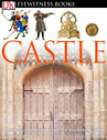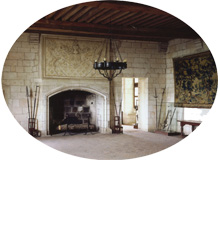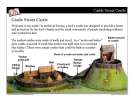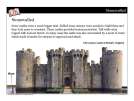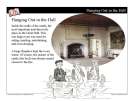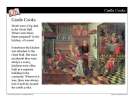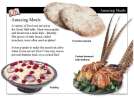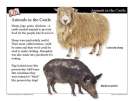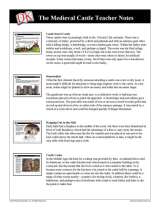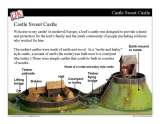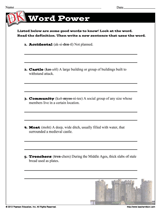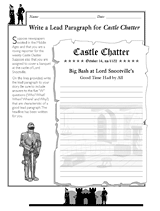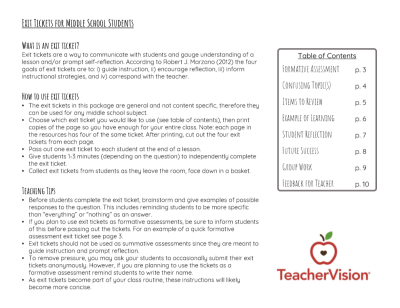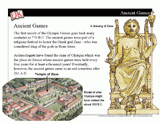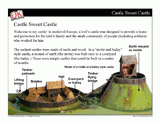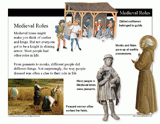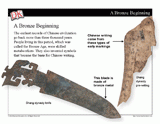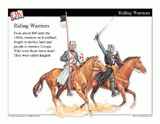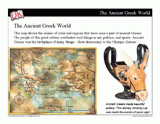Many of the great fortifications of the Middle Ages are still standing today, often dominating the surrounding countryside. Why were they originally built and who lived in them? A castle was the fortified private residence of a lord. The lord could be a king or a lesser baron, but in either case the castle was a home as well as a stronghold. A mark of lordship, it was safe against the cavalry charge of knights—so safe that it could withstand a continuous assault or siege by an enemy. A castle was also a community, with many staff: the constable or castellan looked after the buildings and defenses; the marshal was in charge of the horses, garrison, and outside servants; the chamberlain oversaw food and drink; and the steward ran the estates and finances.
The earliest castles appeared in the 9th and 10th centuries, when the empire created by Charlemagne in modern France, Germany, and North Italy was collapsing as a result of raids by peoples such as Vikings and Magyars. Lords built castles for protection and as bases for their soldiers. Most of these castles were built of earth and timber. The simplest was the ringwork: an enclosure surrounded by a ditch with an earth rampart inside it. A strong timber fence (or palisade) was built on top of the rampart. In the 11th century, motte and bailey castles became popular. An earth mound (or motte) was built next to a yard (or bailey).
During the tenth century, lords began to build castles out of stone. A large stone tower could become the main military and residential building of a castle. Because they needed skilled masons to plan and build them, and were expensive and slow to put up, few such towers were built until the 11th century. They are now often known as keeps, but in their day they were called great towers, or donjons. The Normans liked great towers with massively thick stone walls, and built several after their conquest of England in 1066. Many more were built in the next century.
The hall was the main room in European castles. It was used for eating, sleeping, and carrying out castle business. The day in the hall began early with breakfast, which consisted of bread soaked in ale or watered wine, eaten after Mass. The main meal, where formality and good manners were expected, was eaten at about ten or eleven in the morning. In the evening there were various suppers, which often ended in overeating and drunkenness. Servants with ewer, basin, and napkin poured water over the hands of important guests before and after meals; other people washed at basins near the doors. Later the trestles were removed to make room for entertainment and eventually the stuffed palliasses used for sleeping. Only rich people had real beds. During the 13th century the lord began to distance himself from the larger household, and extra rooms were built for him and his close family.
